Sorry, Seahawks: The Refs Didn’t Blow Super Bowl XL—You Did

BY CHRIS SYPOLT
Full disclosure: I grew up in Pittsburgh, and one of my early memories is making a visit to the Steelers’ locker room after a practice in 1978, where I was able to meet and talk to all of my heroes. I’m especially proud of the fact that at age 9 I told Terry Bradshaw that the team would go 14-2 that season, and got one of the two losses correct.
I’ve also been a resident of Seattle since 1998 and have watched and cheered for the Seahawks as they’ve transformed into an actual competent organization. I’ve even worn Seahawks gear the last couple of years as an acknowledgement of their superior performance. In short, while I care deeply about my original team, I am first and foremost a football fan. The way the Seahawks play the game (great defense, strong running game, “game manager” at quarterback) is exactly the brand of football that I was raised to appreciate and applaud.
I also tend to wear a lot of black and gold during the season, which means that every single person in Seattle (or at least, it feels like it) has seen fit to approach and tell me, at great length, that the Seahawks got screwed in Super Bowl XL. Eventually I got tired of having the same argument and created a document that a) examines all of the controversial calls and b) more importantly, shows how the Seahawks lost that game all by themselves and that blaming the refs is a steaming pile of horse hockey.
THE CONTROVERSIAL CALLS
1. Offensive pass interference in the end zone. 2:08 of the first quarter. While Seahawks fans now seemingly get beneficial calls even when the ref is standing right there (see Seahawks-Lions, Week 4, 2015), they apparently weren’t used to the idea that sometimes those calls go against them way back in 2005. Take a look at this sequence.
Seahawks receiver Darrell Jackson and Steelers cornerback Bryant McFadden are tight together in the end zone.
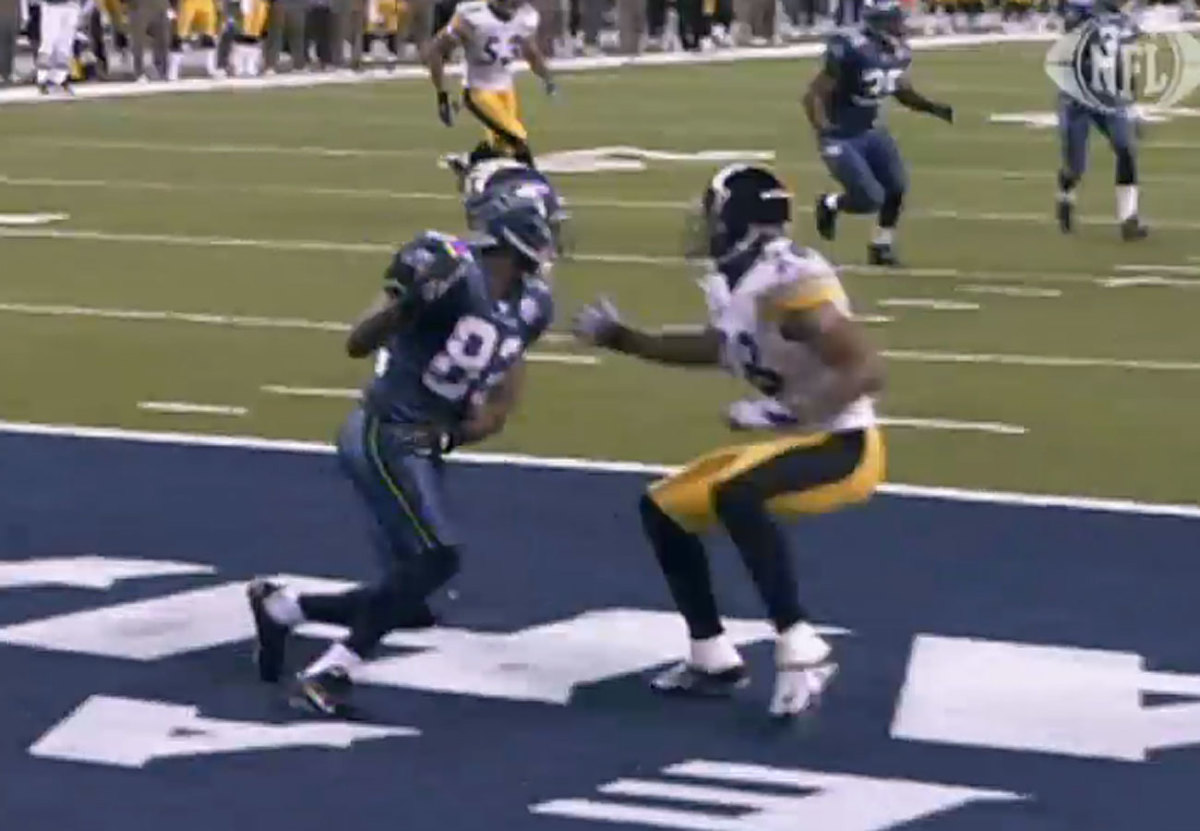
Jackson extends his arms, and McFadden is forced to take a half-step back. Not only does the push open up space, but McFadden’s momentum is such that he is leaning backward instead of forward, where he could have made a play.
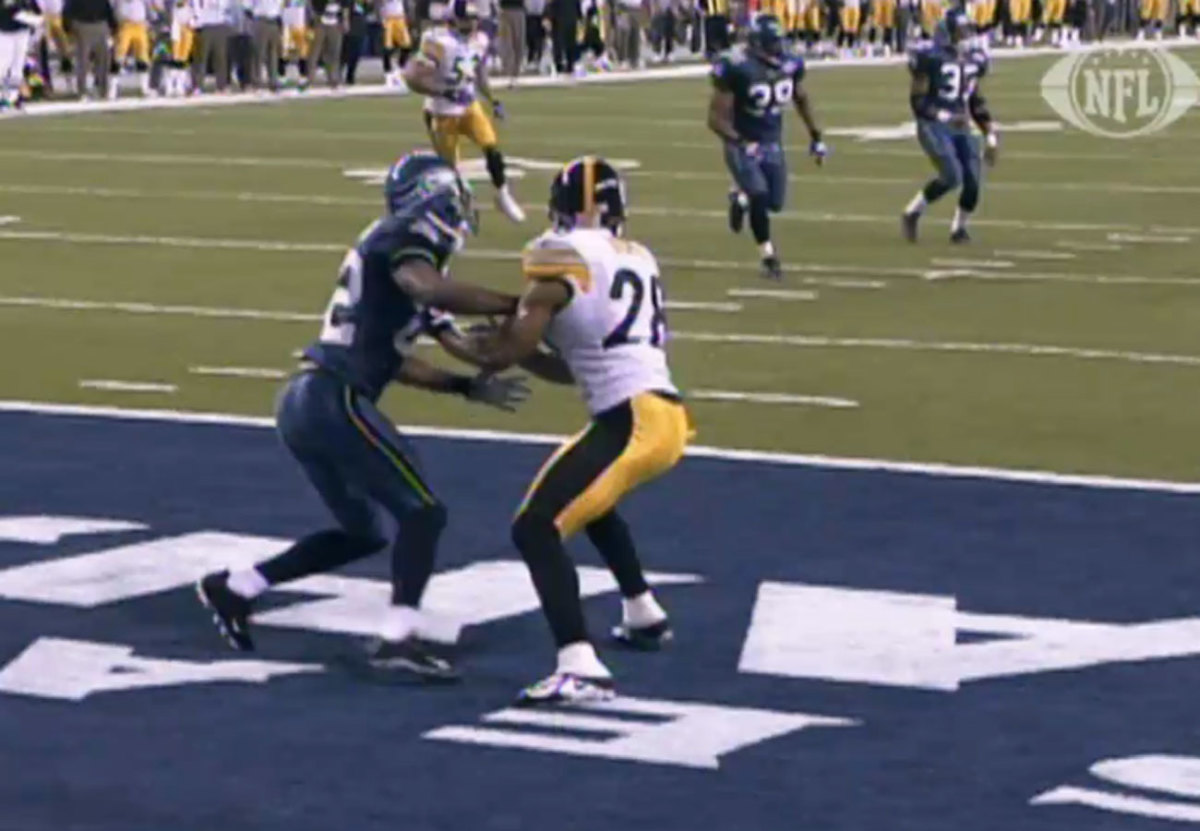
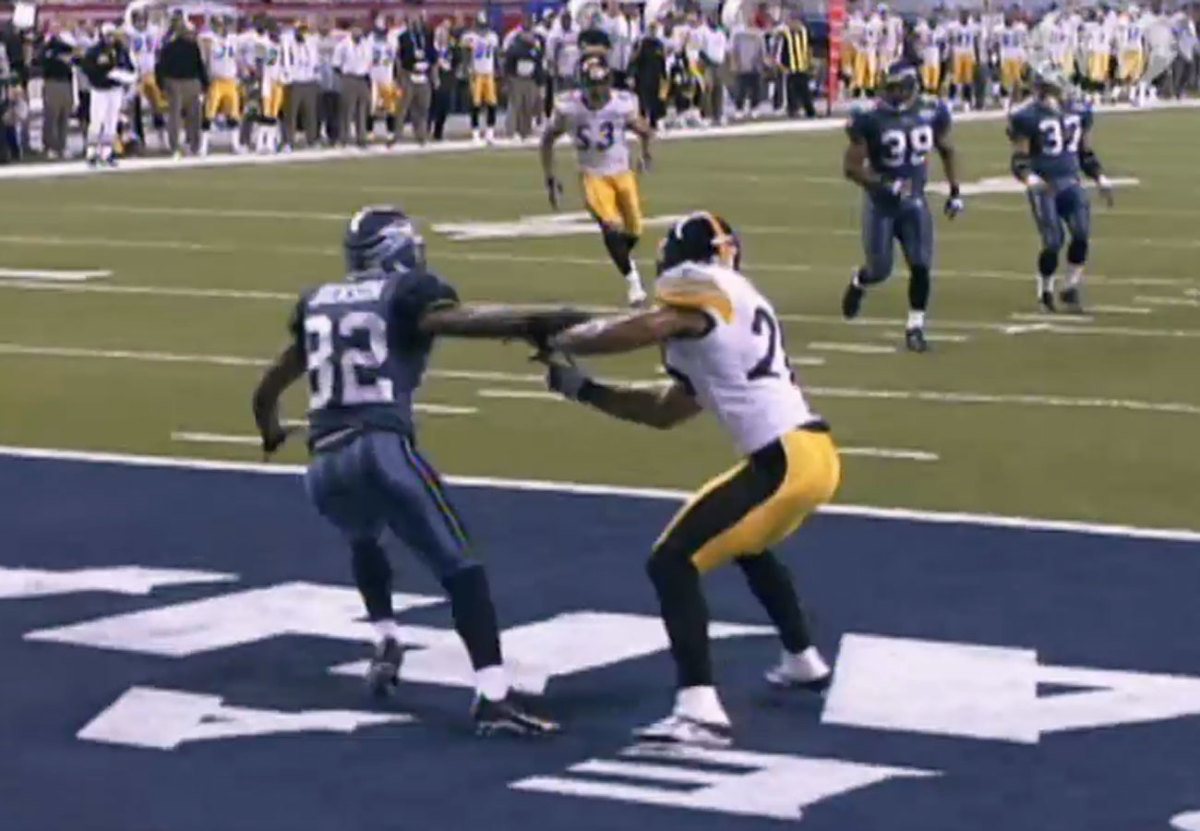
The claim is that this is a ticky-tack call. But look at it: Jackson pushes off to his right, then dives to his left to catch the pass. Back, and to the left. Back, and to the left. And Jackson miraculously picks up six feet of separation. How could this have happened?
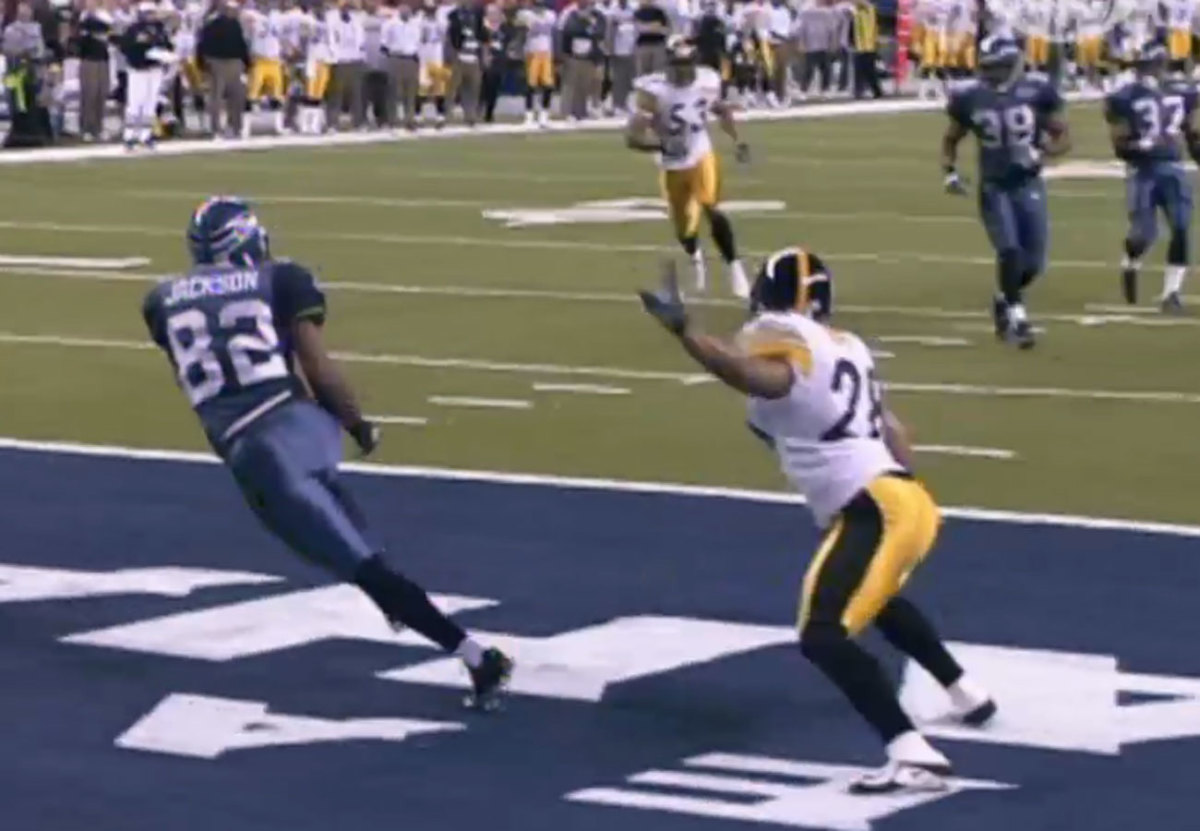
The official is standing about five feet away from the play. He quickly flags it.
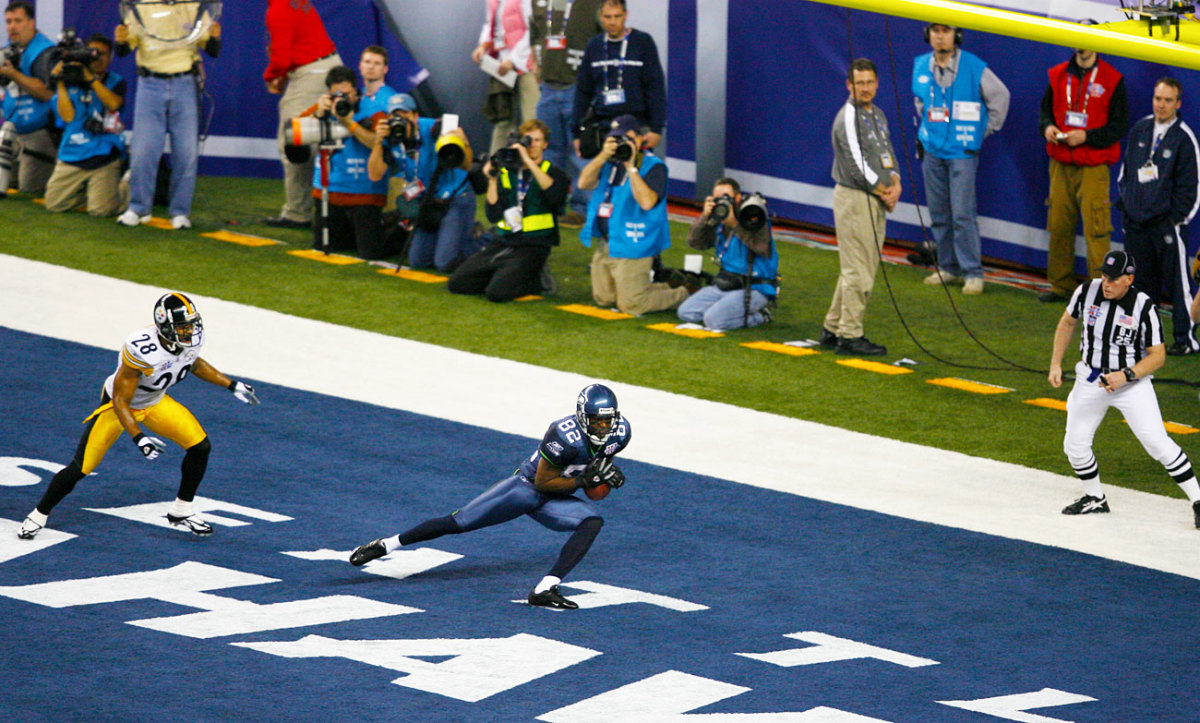
Is this equivalent to the garbage that Michael Irvin used to get away with? Nope, not even close. But the call is correct and had to be made, especially on a TD play.
2. Ben Roethlisberger’s goal line dive for a TD.2:00 of the second quarter. Of all of the complaints, this one is probably the most legitimate, but not for the reason that Seahawks fans bring up.
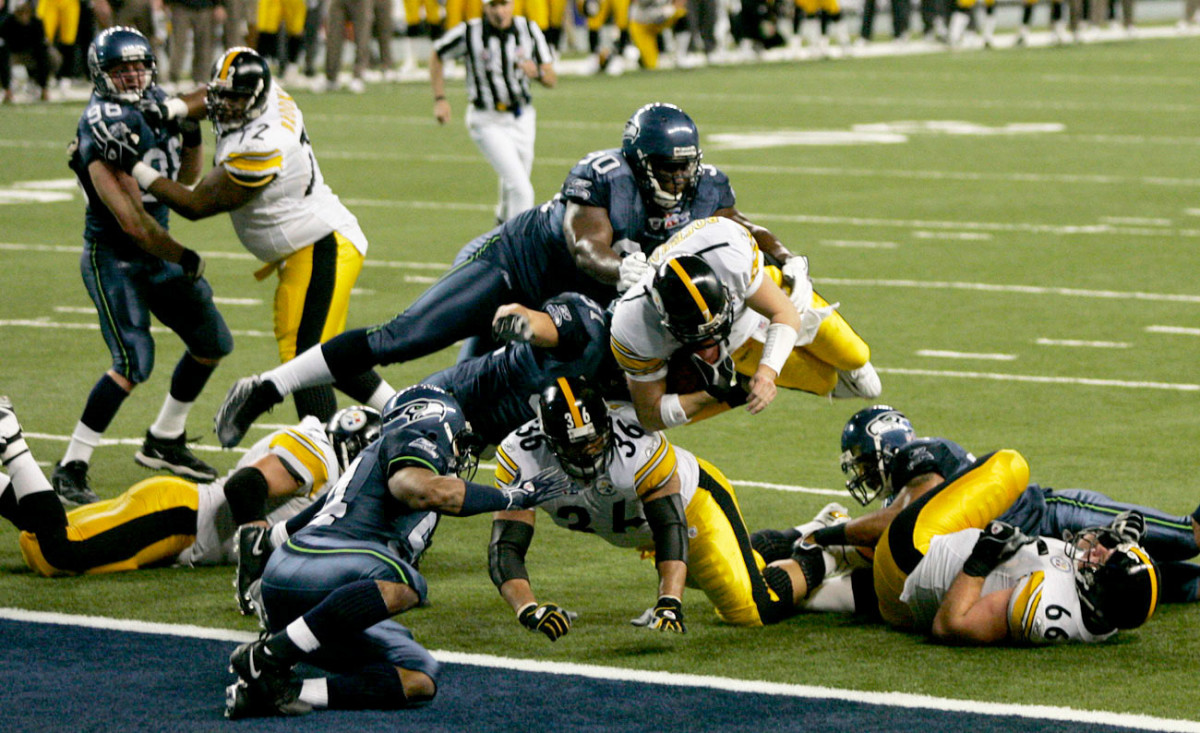
The controversy is caused by the fact that the side judge initially ran in with only one arm raised, signaling “dead ball.” He then switched to “touchdown.” Why he made the change is unclear.
You can look at the video on a frame-by-frame basis, and to this day there is no clear evidence that the ball broke the plane. Then again, there is also no clear evidence that he was stopped short of it. The official who made the call, in fact, had the best real-time view of anyone in the stadium or watching on television.
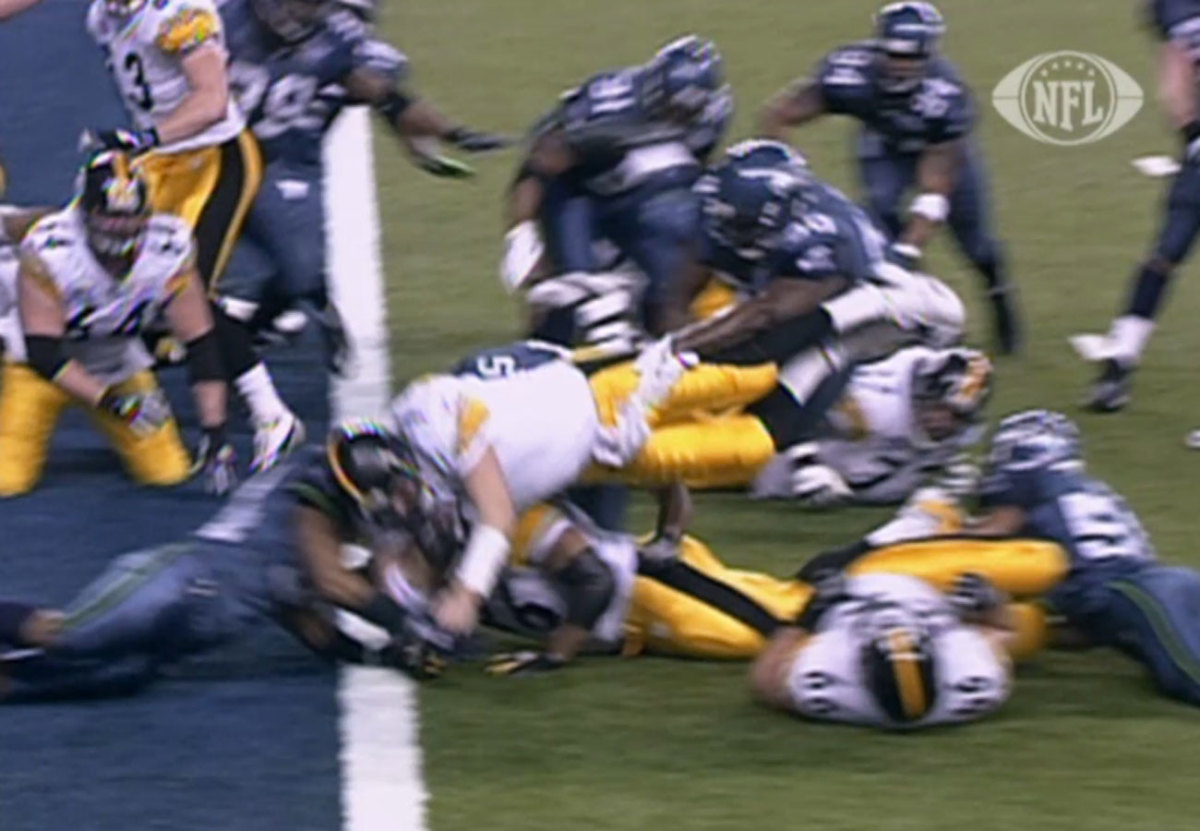
Whether or not the call was correct, the standard for overturning a call made on the field is, and has been, pretty clear: “indisputable visual evidence.” That isn’t the case here. All of the teams in the league have agreed to abide by this rule, no matter how flawed it is in application.
3. Holding penalty on Seattle right tackle Sean Locklear. 12:35 of the fourth quarter.
There are as many definitions of holding and when it should be called as there are drops of the rain in the ocean. However, when the right tackle’s arm is hooked around the neck of the defensive player, especially when a) this happens right in front of the referee and b) it prevents what would have otherwise been a clear path to the quarterback, it looks like the textbook definition of holding.
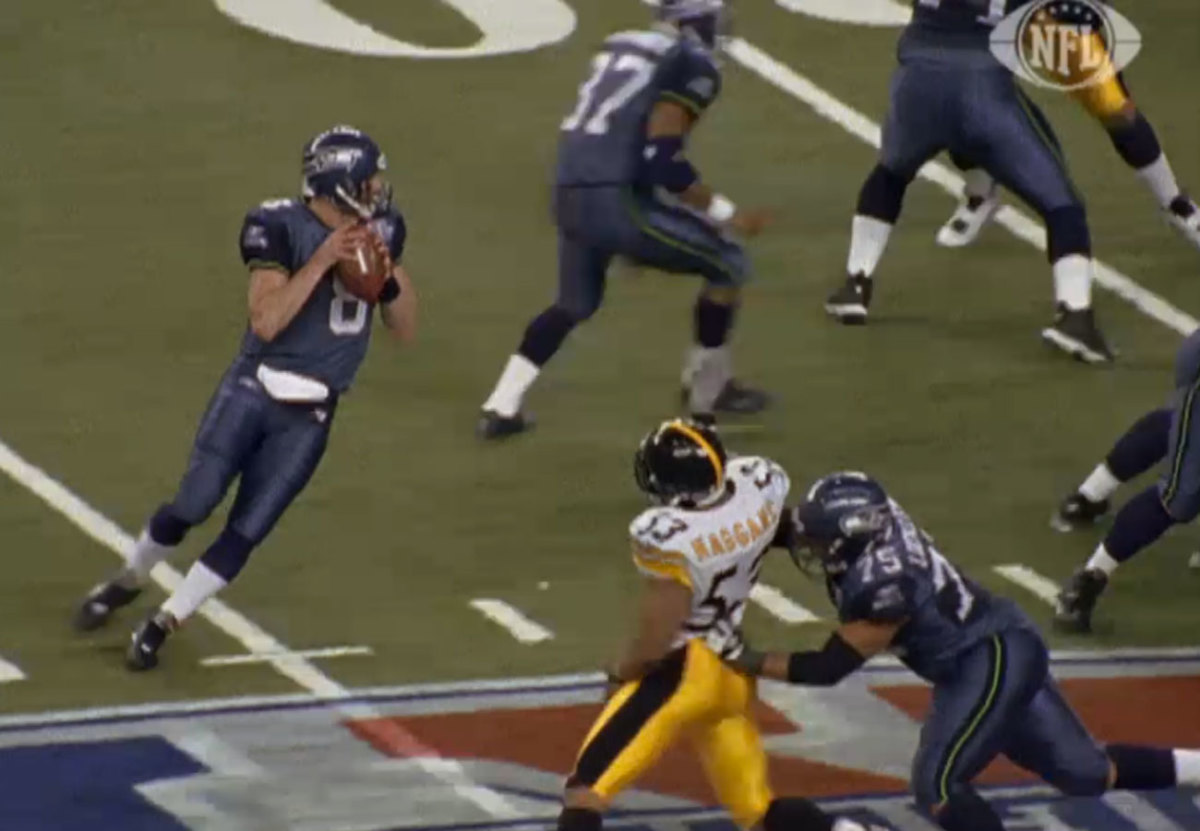
The perception that this was not holding was reinforced by John Madden’s commentary right after the play, when he proclaimed that it wasn’t a penalty. Since most Seahawks fans were new to the game, they took this, incorrectly, as gospel. He was wrong, and so are they.
4. Low-block penalty on Hasselbeck during interception return.10:54 of the fourth quarter.
In Week 12 of the 2005 season the Steelers played the Colts. At 0:27 of the second quarter, Roethlisberger was intercepted by Mike Doss, and Roethlisberger was flagged for going low against a blocker during the return.
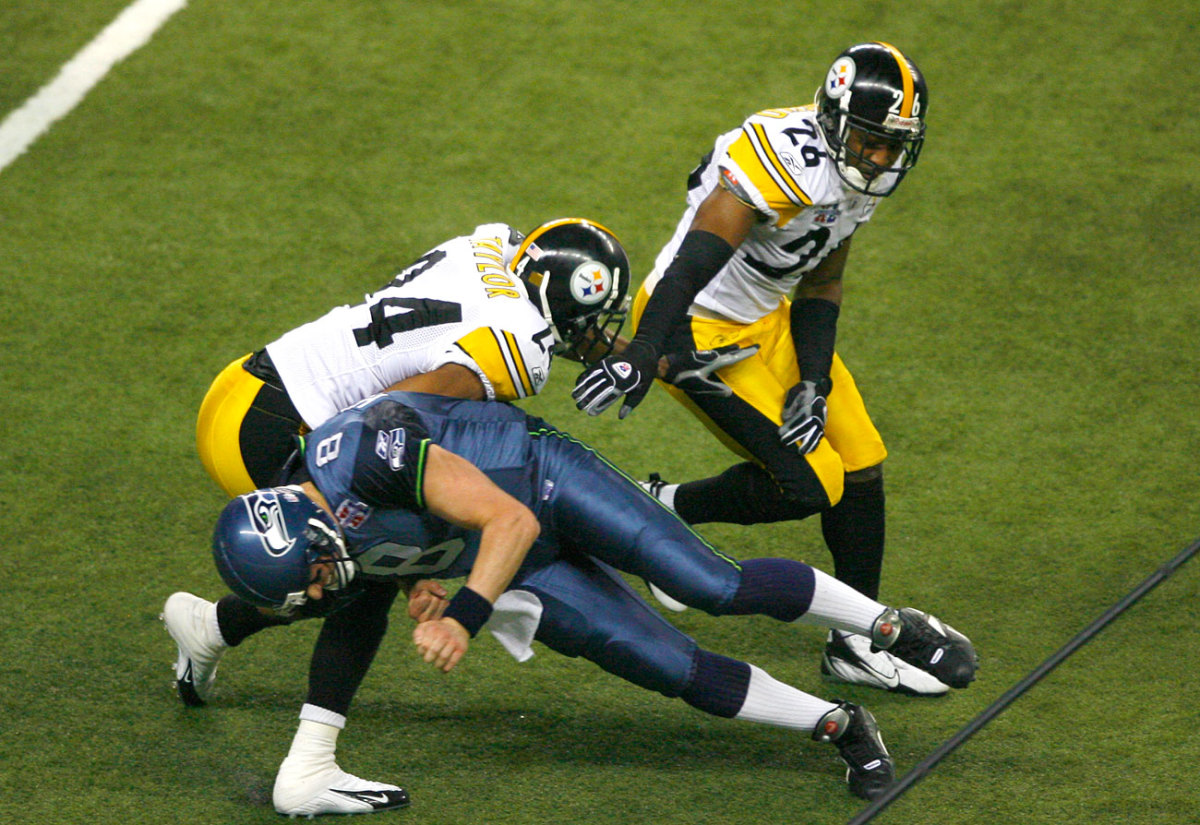
In Super Bowl XL, at 10:54 of the fourth quarter, Hasselbeck was intercepted by Ike Taylor and subsequently flagged for going low during a return.
In Roethlisberger’s case, the flag was legitimate—he was trying to take out a blocker. In Hasselbeck’s case, the case can be made that he was going after the ball-carrier, which is legal, rather than a blocker.
Both of these flags were assessed by the same crew chief/referee, Bill Leavy, so at least he was consistent.
HOW THE SEAHAWKS’ OWN INCOMPETENCE DOOMED THEM
1. Where’s Ben?
Ben Roethlisberger is a fairly large human, at 6-5 and 240 pounds. Finding him on a football field is, in effect, the easiest game of “Where’s Waldo?” of all time. His movement is about as fluid as the AT-ATs from The Empire Strikes Back. And yet, for all of that, the Seahawks lost track of him for as long as a typical visit to the DMV takes.
Roethlisberger evades the rush
Roethlisberger slipped past the Seahawks rush.
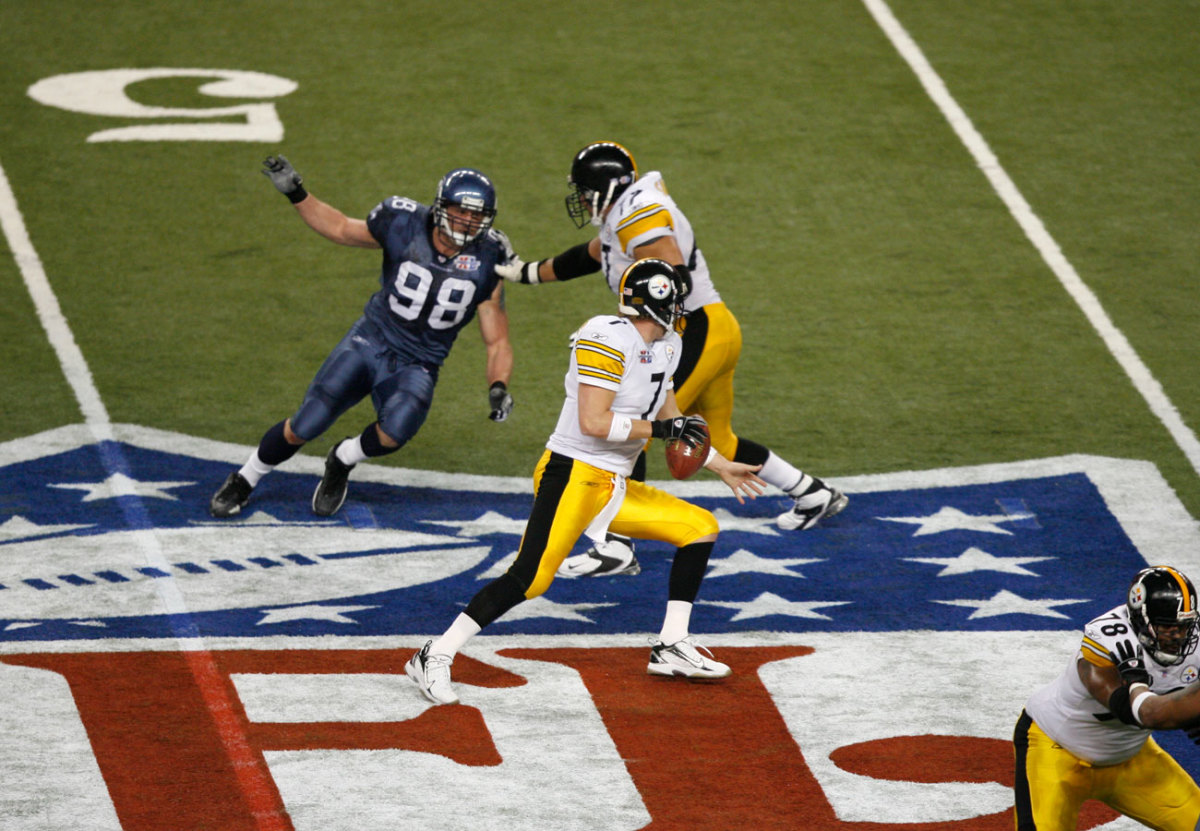
Roethlisberger slipped past the Seahawks rush.
He wasn’t hard to spot, though he was hard to get to.
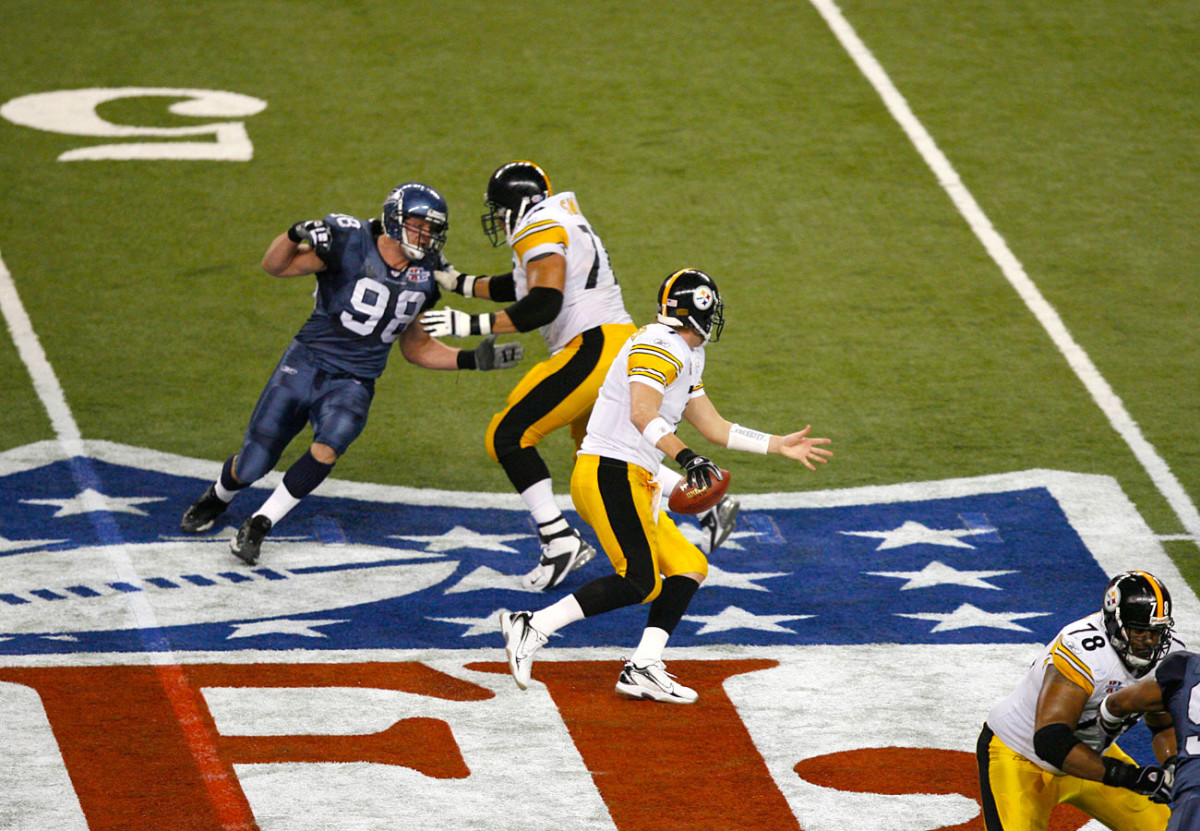
He wasn’t hard to spot, though he was hard to get to.
Big Ben finds open space toward the sideline.
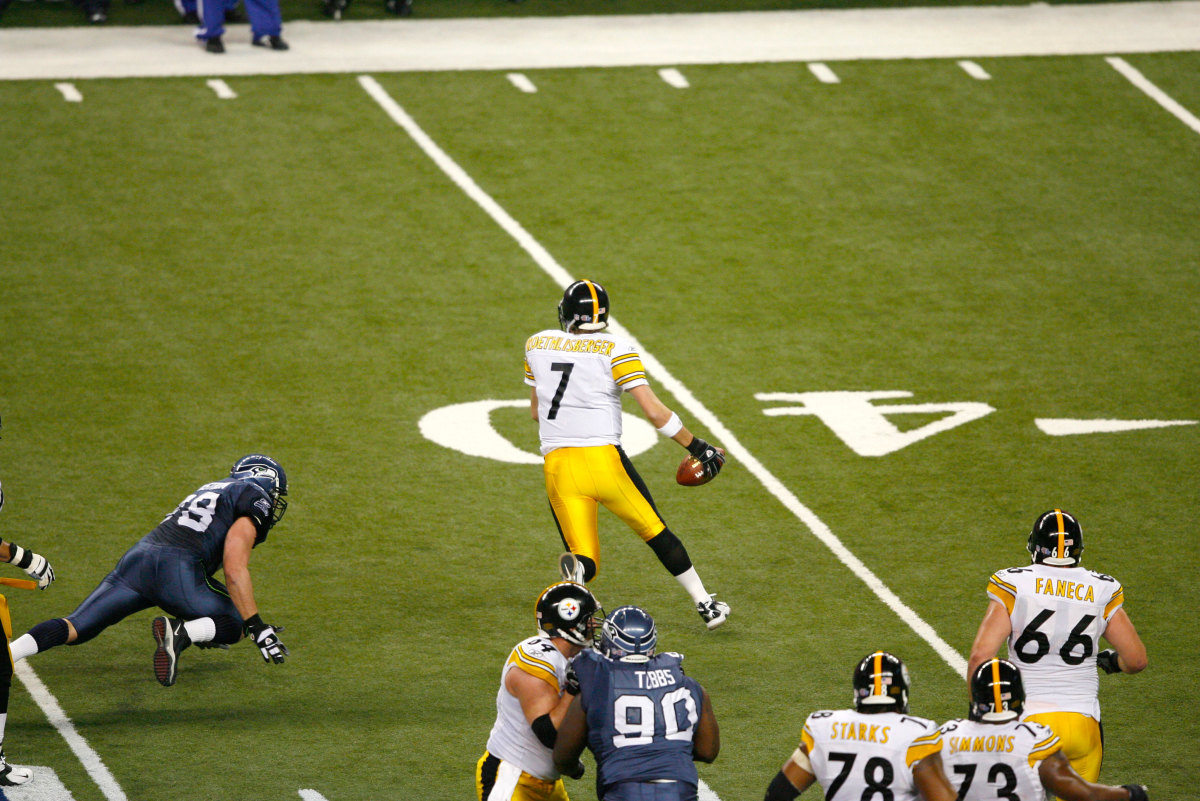
Big Ben finds open space toward the sideline.
He sets and throws long for Ward.
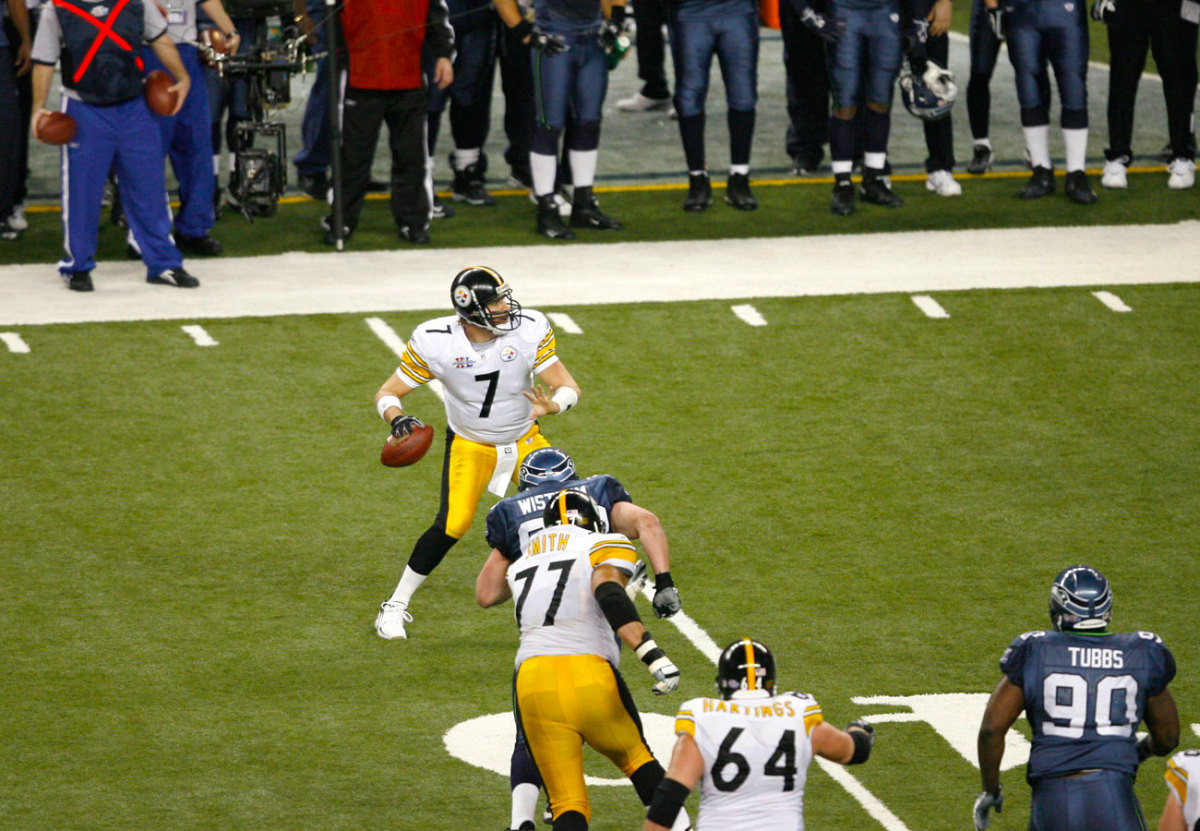
He sets and throws long for Ward.
3:58 of the second quarter, Steelers ball, third-and-28. Roethlisberger runs around and does Roethlisberger-type things, including, in this instance, developing the power of invisibility for seven seconds before he finally throws to Hines Ward at the 3-yard line.
About the throw—according to the game clock it took approximately three seconds for the ball to reach its target. Some quick back-of-the envelope use of the Pythagorean theorem shows that it traveled roughly 46 yards in the air. Yet even given nearly 10 seconds, the Seahawks didn’t bother to throw a blanket over Ward, who had nearly double the number of targets, catches and yards that season as the next closest Steeler.
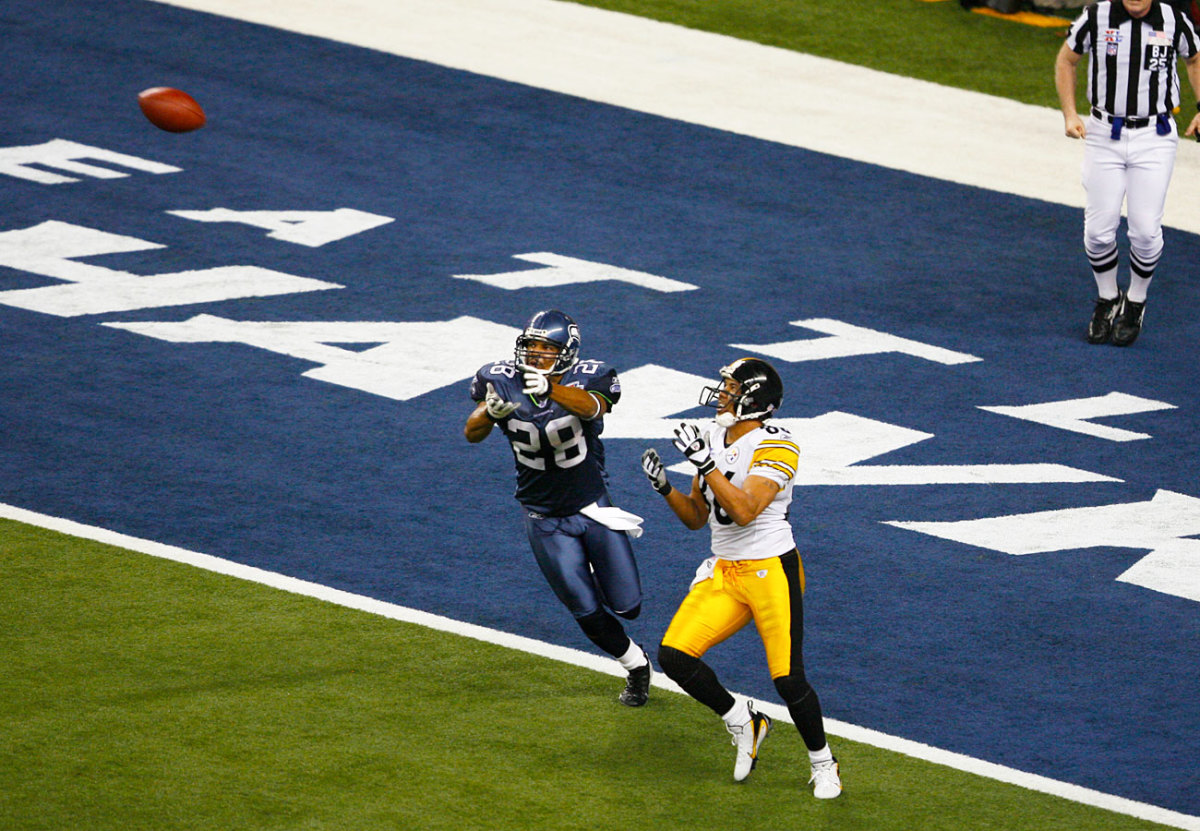
The question really becomes this: With a three-second flight time, and knowing that Ward was Roethlisberger’s go-to guy, how do the Seahawk defenders let this pass be completed?
Hey! Who’s that really fast guy and why is he running away from us?
At 14:50 of the third quarter, the Steelers ran a play involving a pulling guard, which they’ve been running since at least as long as I’ve been alive.
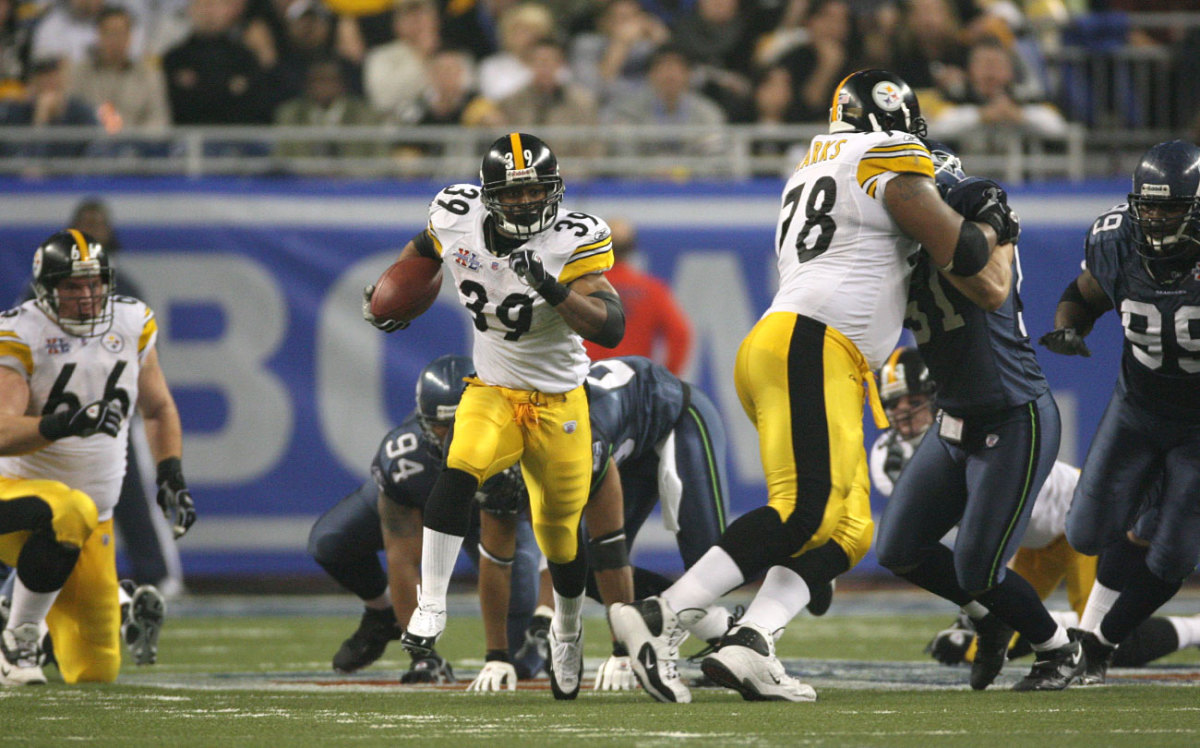
Willie Parker popped through a six-foot hole in the Seahawks line and proceeded to set the record for longest touchdown run in a Super Bowl. Bonus points for the safety who took the wrong angle at the point of attack and ended up grasping at air as Parker flew past him.
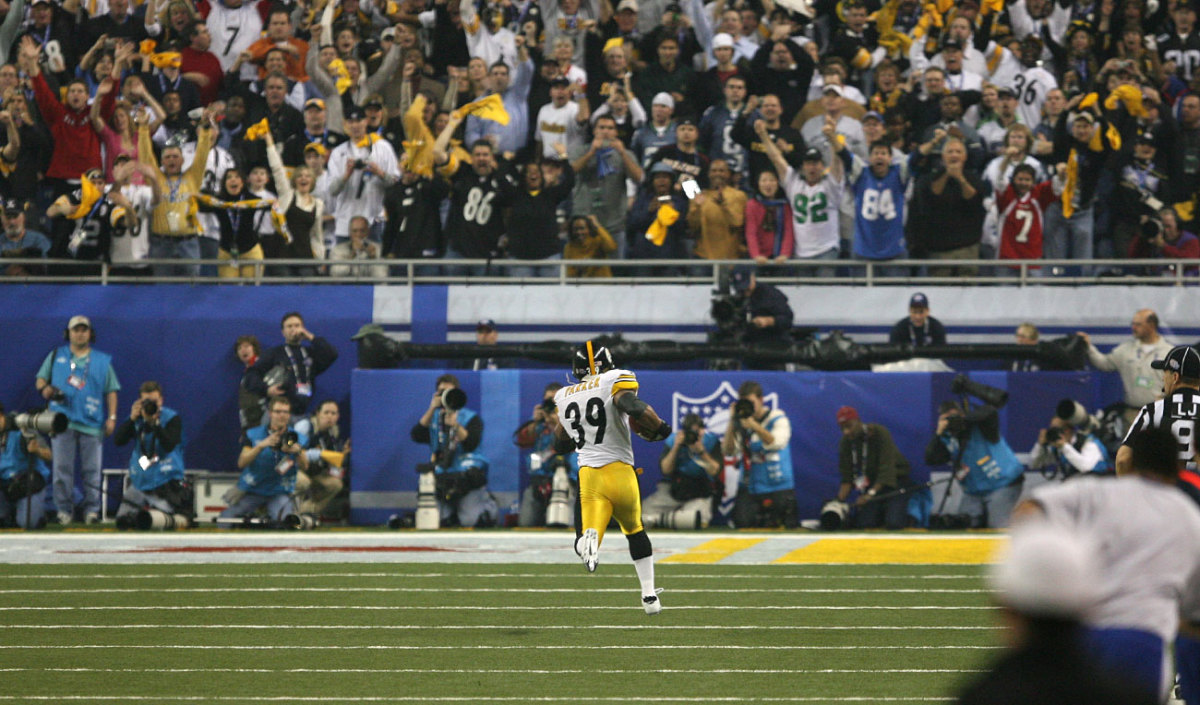
Who knew that the Steelers might run a trick play with Antwaan Randle-El throwing to Hines Ward?
9:04 of the fourth quarter, and the Steelers set up a reverse with Randle-El, a college quarterback, getting the ball from Parker and carrying it toward the right side before pulling up and passing to Ward, who was open by two or three steps inside the 10. Ward vaults into the end zone for the touchdown.
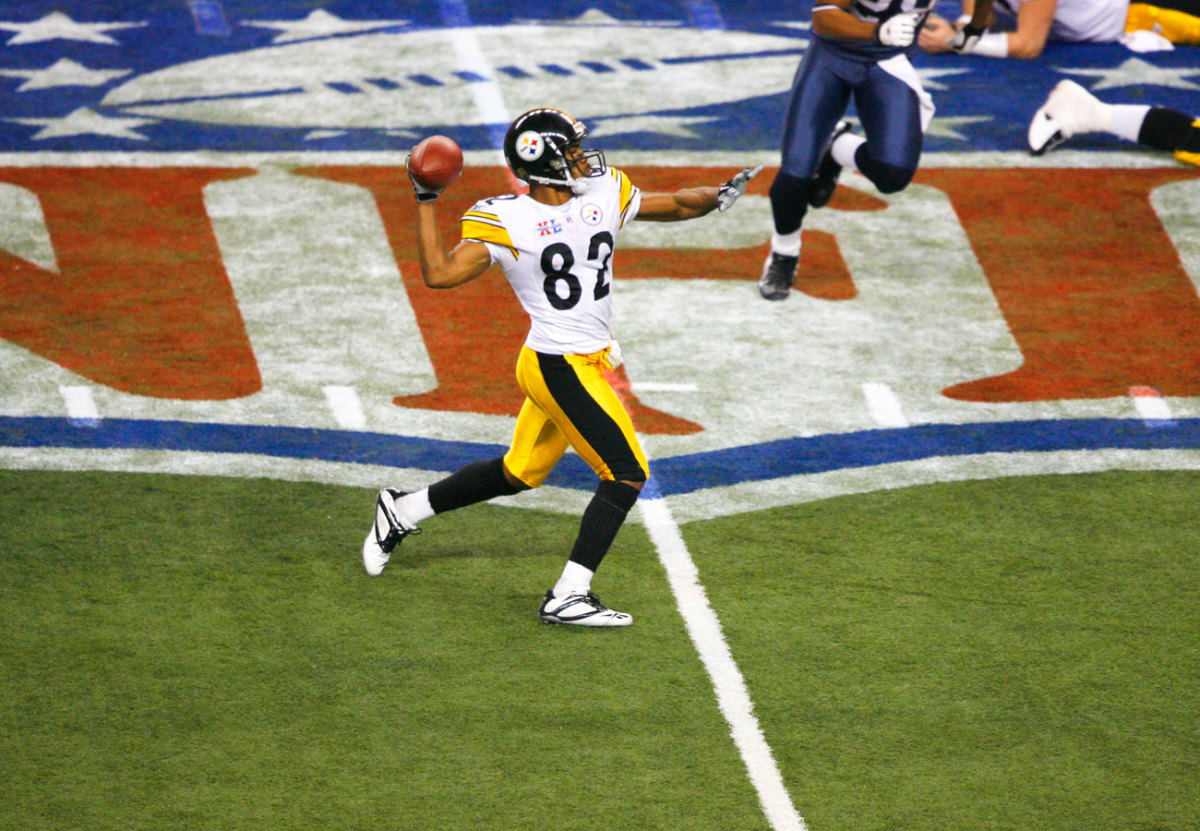
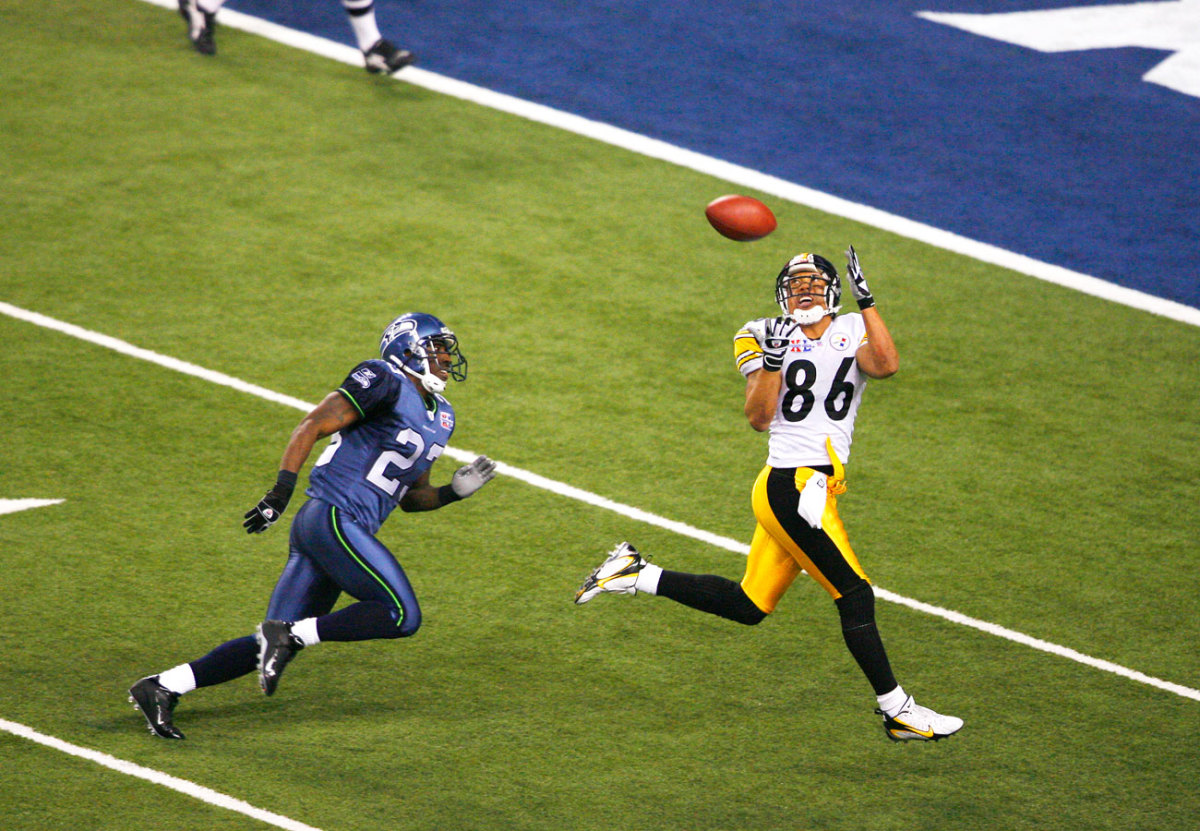
The Seahawks had two weeks to prepare for the Steelers. Perhaps they should have studied tape a little harder—for instance, footage from Week 10, Steelers versus Browns, in which Pittsburgh ran the same play.
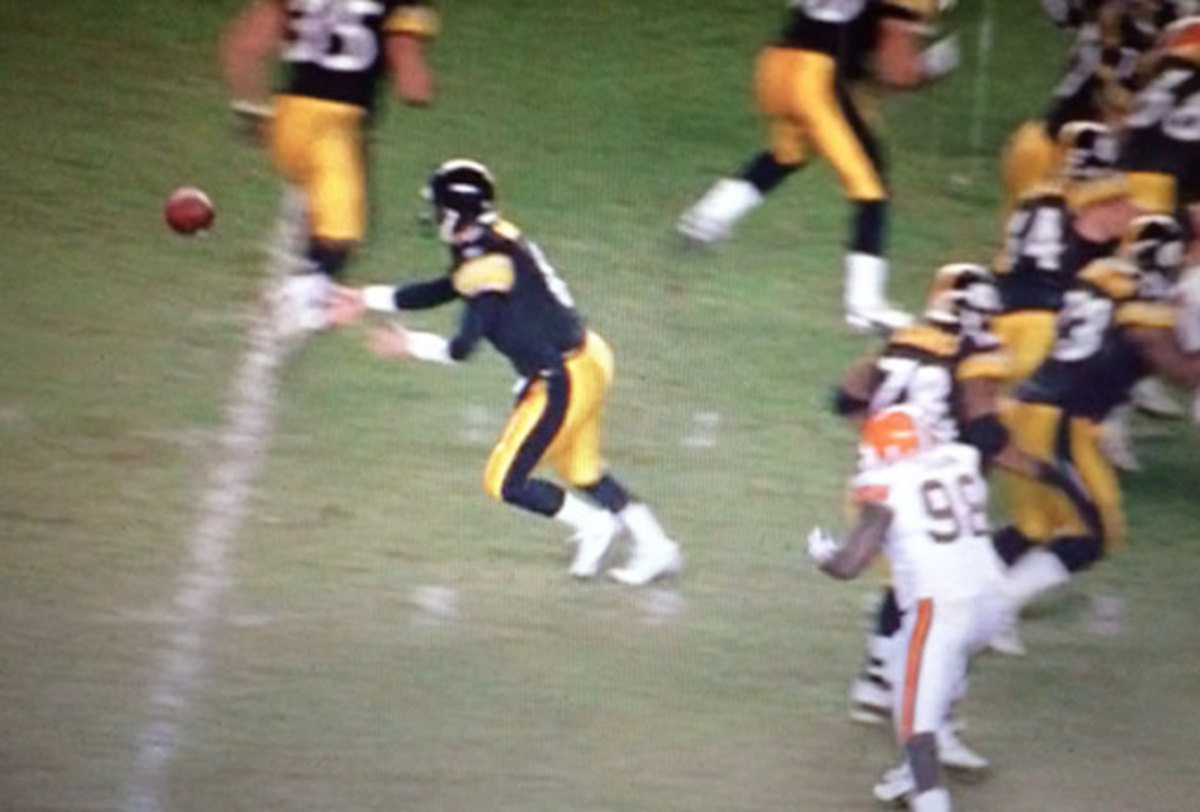
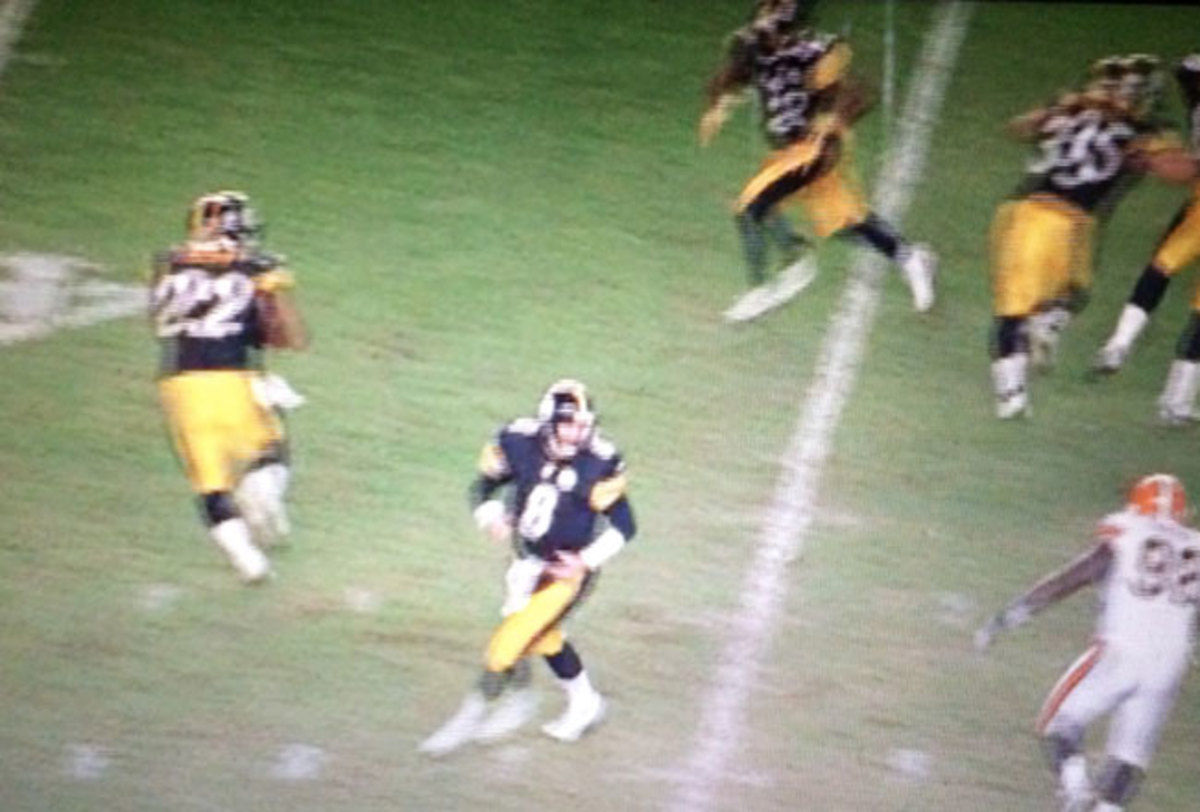
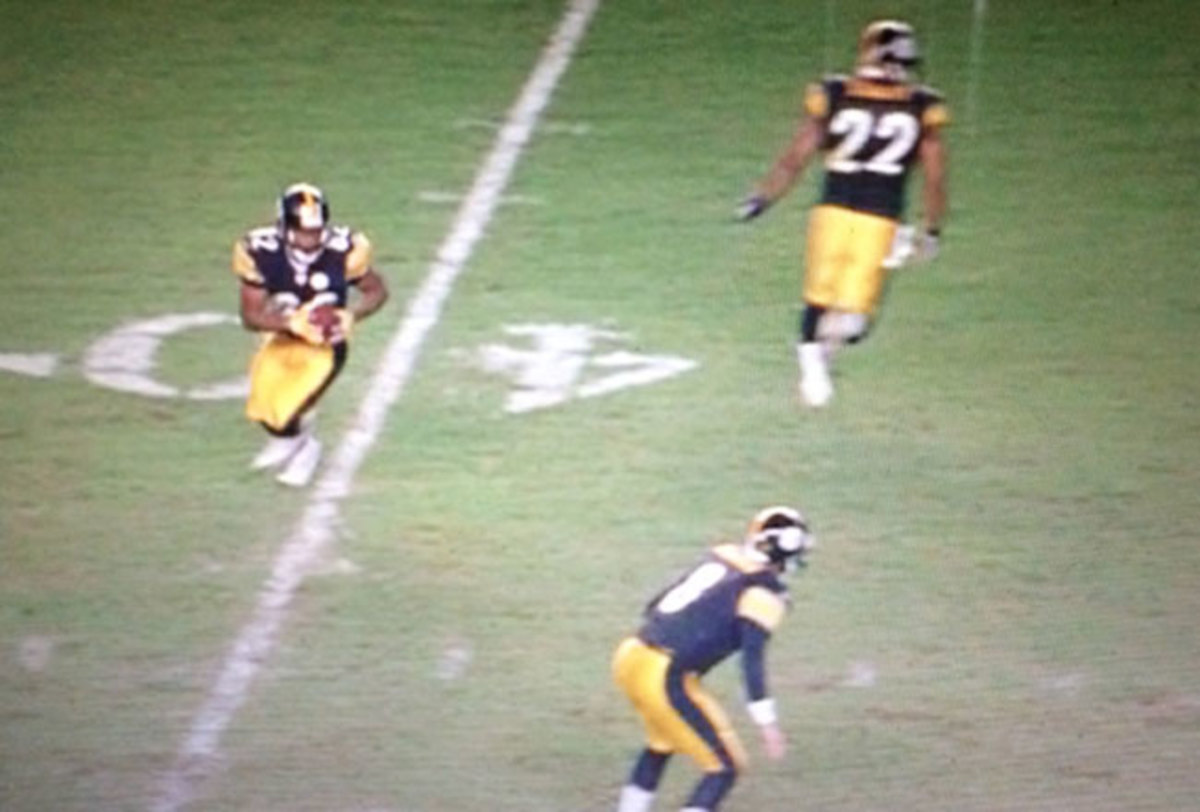
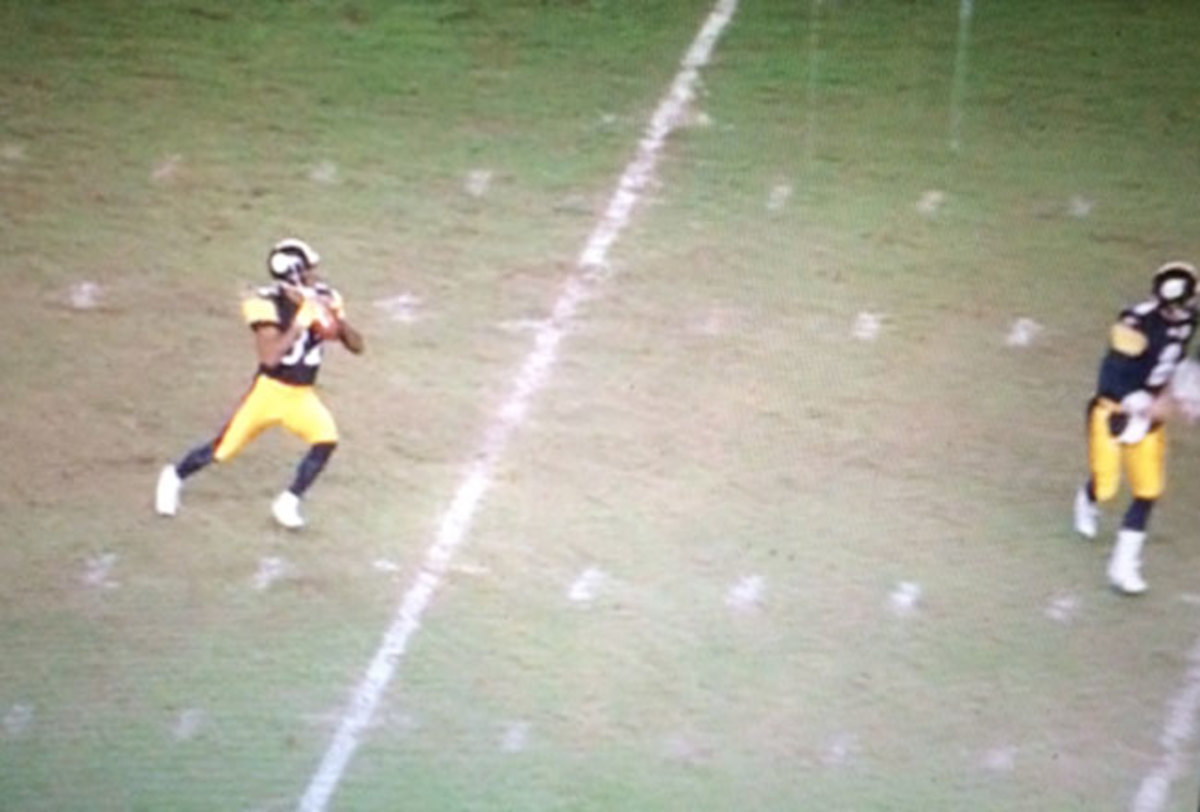
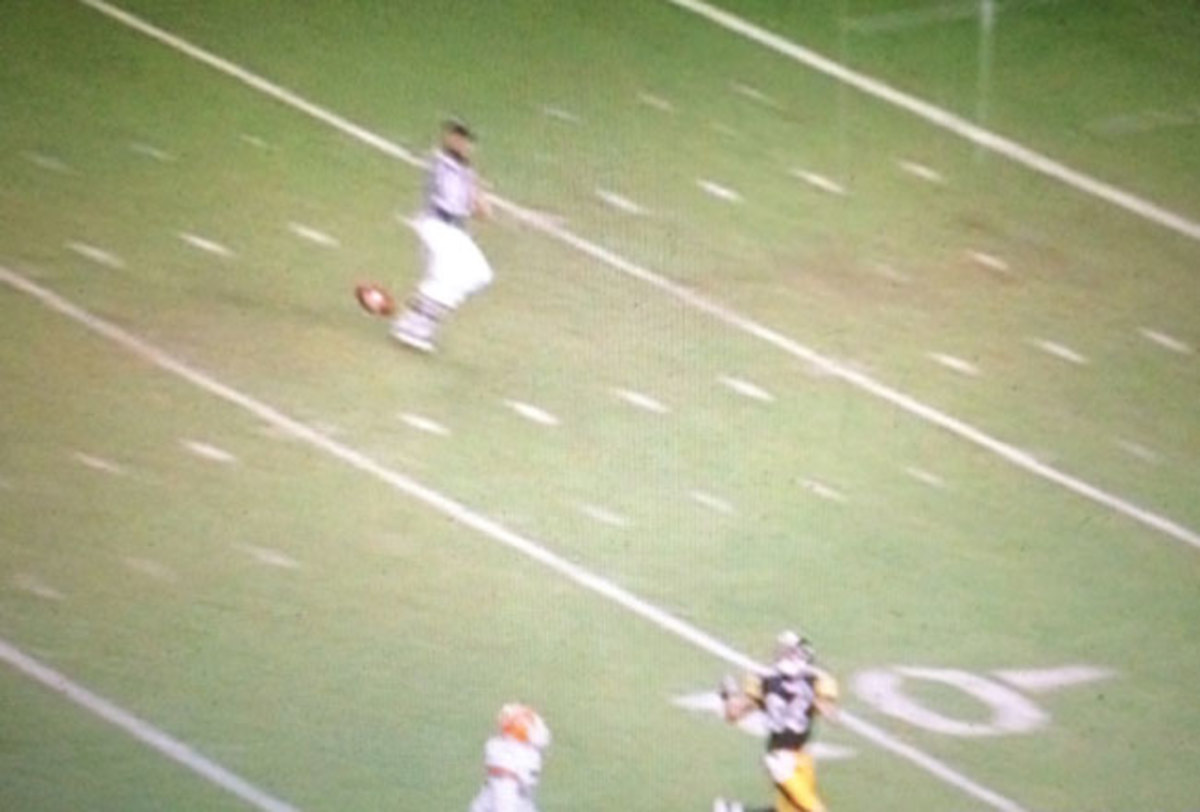
Maybe it was the fact that Tommy Maddox was the QB and Duce Staley the running back on the front end of the play in Week 10, rather than Roethlisberger and Parker, tha threw the Seahawks off of the trail.
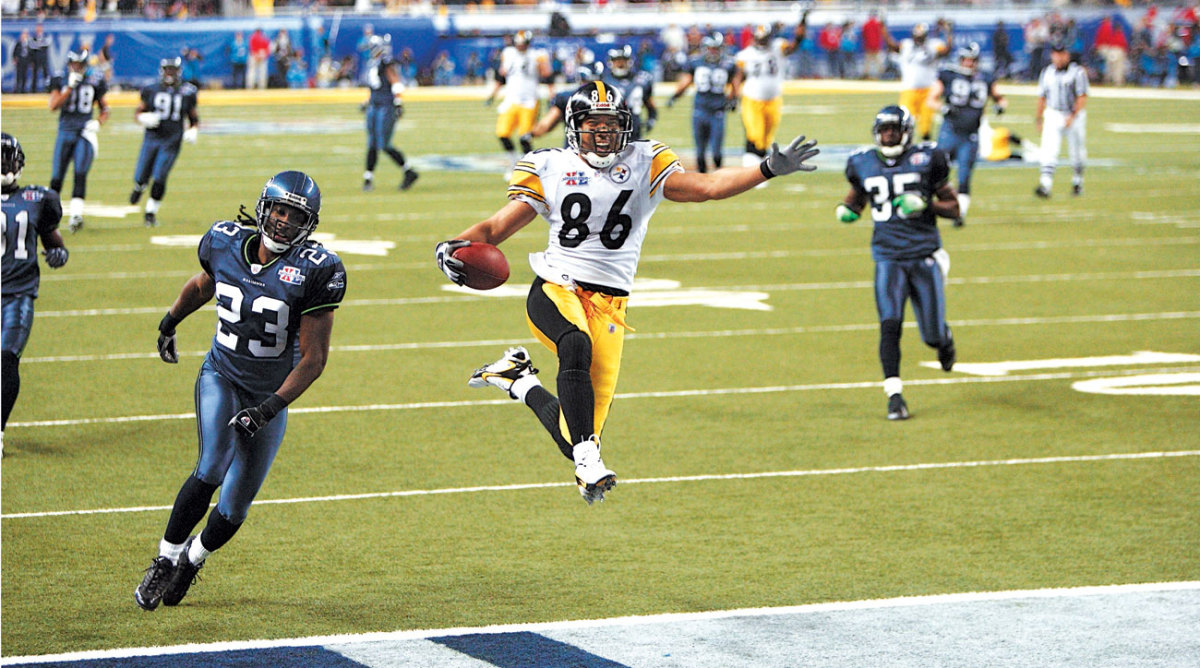
Hey! Why does this clock keep running backwards?
At the end of both the first and second halves, the Seahawks let an enormous amount of time run off the clock, as they displayed little apparent awareness that the time allotted for game play is finite.
In the first half, Seattle let 15 seconds bleed off the clock on a four-yard Shaun Alexander run before calling their second timeout of the half. Even worse, after another four-yard run by Alexander at 0:48, 25 seconds ran off the clock, leaving Seattle with third-and-6 and 13 seconds left. Josh Brown—who’d made just 72% of his field goals that year—ended up pushing a 54-yard attempt wide right. There’s no way of knowing what the Seahawks could have done with those wasted 40 seconds, but at the very least it is reasonable to think they could have gotten a shorter field goal attempt out of it.
In the second half, the Seahawks got the ball with 1:51 on the clock, down 21-10, so time was of the essence. On two separate instances, they wasted more than 20 seconds on plays marked “no huddle.” Just as important, and probably more so, is the fact that the Seahawks got to the Steelers 26 (a potential 43-yard field goal) with 35 seconds remaining, and instead of taking the three points, attempting an onside kickoff and, if they recovered, having a decent amount of time to throw into the end zone, they ran four plays, the last of which was an incomplete pass on fourth-and-6 from the Steelers 23 at 0:08 remaining.
Perhaps Holmgren and Hasselbeck had some kind of grand strategy here, but if they did, it isn’t very obvious to the (admittedly) untrained eye. Instead, it seemed more like this was the first time they had encountered a running clock with a two-score deficit and as a result had never bothered to have a plan for what to do if they found themselves in that situation.
Conclusions
I didn’t even bother getting into the epic ball of fail that was Jerramy Stevens in this game, with three drops on passes that would have been long completions.
It is fashionable for Seahawks fans to blame the refs for their loss, and the fuel for this fire was added by Mike Holmgren at a public rally after the team returned to Seattle, when he said “I didn’t know we were going to have to play the guys in the striped shirts as well.”
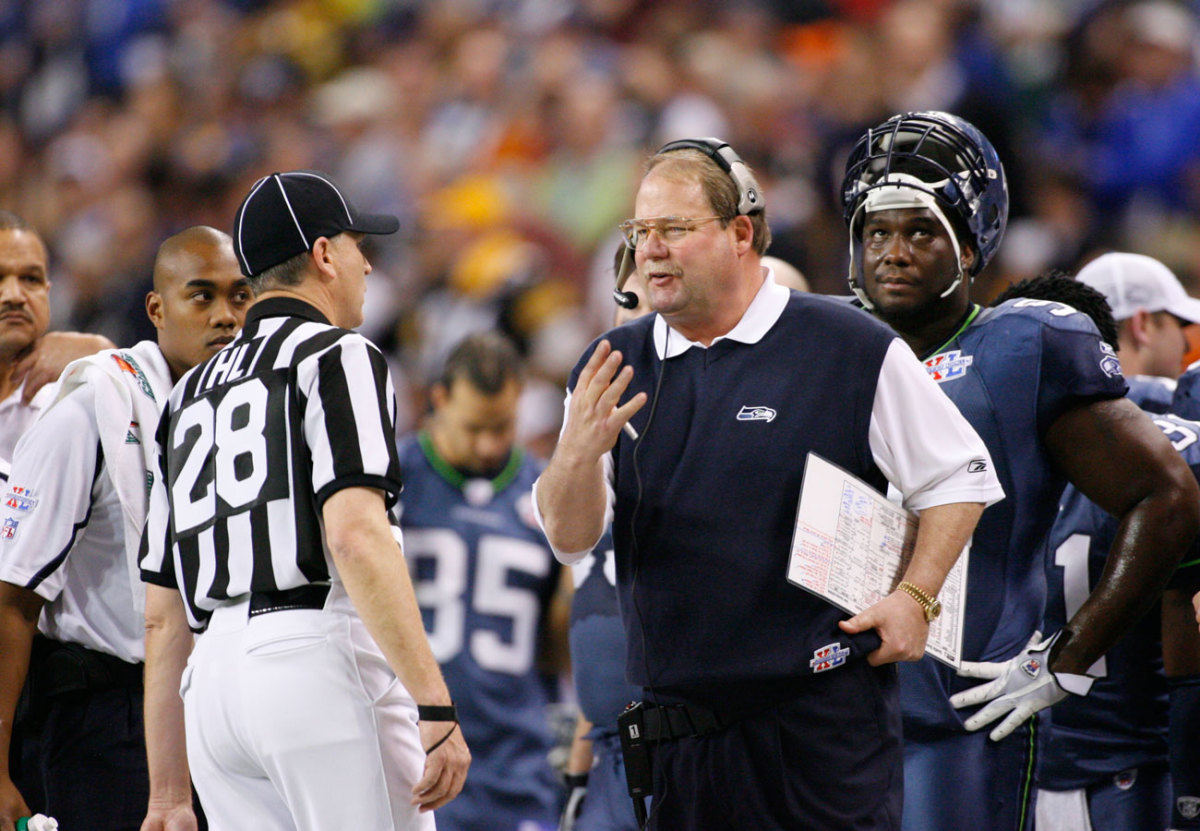
My response, as always, is to consult the wisdom of one Charles Henry Noll, to whom two relevant quotes are attributed: The first is “Before you win a game, you have to not lose it.” The second is “You have to play better than the refs ref.”
The Seahawks did neither of these things in Detroit on Feb. 5, 2006. The calls by the refs, while close, are justifiable. The series of breakdowns by Seattle violated the far more important Nollism about winning.
Of course, since nobody in Seattle has the patience or the desire to hear any of this, it generally falls on deaf ears. So whenever one of these conversations starts up, even 10 years later, I just go with this:
“Well, you caught me. Finally. I’m the guy who personally delivered a U-haul full of unmarked bills to the officials on the night before the game. I’ve been running for years. Would you like a full, taped confession?”
In other words, Seahawks fans, let it go. Your loss was as much due to your team’s own incompetence as it was to calls made by the refs, and after 10 years you’re starting to look pathetic.
• OK, Seahawks fans—send your rebuttals to talkback@themmqb.com.
